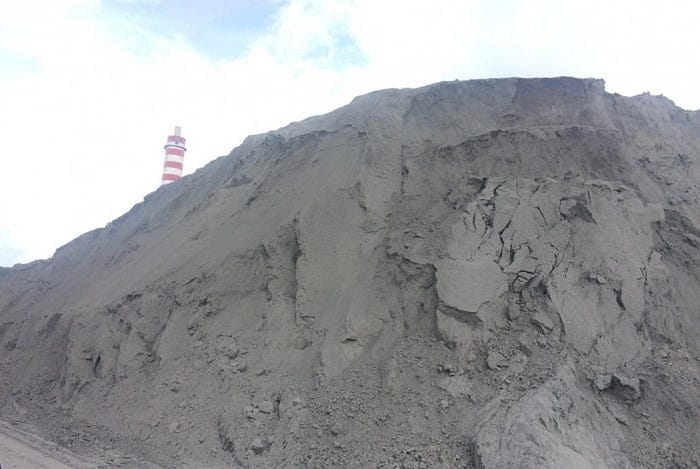
What is coal fly ash waste?
Coal fly ash is a waste generated from the operation of coal boiler plants that are used as power and energy generation machines for companies. Generally, this waste consists of two types of ash that have different characteristics. The two types of waste produced are fly ash and bottom ash.
Coal processing carried out at the boiler plant produces a total of 25% bottom ash and 75% fly ash. Fly ash has a very fine powder form which is a material with good pozzolanic properties. While bottom ash has a larger size and is coarser than fly ash, so bottom ash falls to the bottom of the furnace. The physical appearance of bottom ash is similar to natural river sand, and the gradation varies such as fine sand and coarse sand.

Fly Ash
Fly ash types are categorized into 3 classes, including:
1. Class N, is fly ash calcined from natural pozzolan such as diatomite, shole, tuft, and pumice.
2. Class F, is fly ash produced from burning anthracite coal at a temperature of approximately 15600C.
3. Class C, is fly ash resulting from the combustion of lignite/coal with a carbon content of approximately 60%. This type of fly ash has properties like cement with lime content above 10%.
Both class F and class C fly ash have almost the same characteristics. What distinguishes the two is only the chemical composition contained in them.
Class F fly ash is usually derived from the combustion of bituminous coal, has a total silica (SiO2), alumina (AL2O3) and ferric oxide (Fe2O3) content of at least 70% of the total weight of the mixture and a low calcium oxide (CaO) content of less than 10%. Although this type has unreactive crystalline mineral materials, class F fly ash still has pozzolanic properties. Class F fly ash also has a slow heat addition rate compared to class C fly ash.
Class C fly ash comes from burning lignite or subbituminious coal which has a chemical compound of SiO2 + Al2O3 + Fe2O3 > 50%. Class C is pozzolanic and cementitious. Class C fly ash has a higher calcium content so that it has a higher initial strength when compared to class F.
Then finally, for class N fly ash comes from natural pozzolan derived from sedimentation from volcanic lava ash which contains active silica or silica alumina compounds which when mixed with water, the pozzolan will form calcium hydroxide.
Bottom ash
Similar to fly ash, bottom ash is the residual combustion of coal in the boiler of a Steam Power Plant (PLTU). The size of bottom ash is larger and coarser than fly ash. The physical appearance of bottom ash is similar to natural river sand, and the gradation varies such as fine sand and coarse sand. The grain size of bottom ash makes researchers interested in using it as a substitute material in concrete production.
Fly ash and bottom ash can be utilized into valuable goods, for example, such as being a mixture of concrete or brick as a substitute for sand which has the advantage of producing concrete with higher compressive strength and abrasion resistance compared to mixtures without fly ash. This is closely related to the compressive strength of concrete where the higher the compressive strength, the higher the abrasion resistance. In addition, this waste can also be used as an ingredient for soil stabilization and plant fertilizer mixtures.
The process of utilizing Fly ash and bottom ash waste itself can be done since the issuance of Government Regulation №22 of 2021 concerning the Implementation of Protection and Management of Concrete. 22 of 2021 concerning the Implementation of Environmental Protection and Management which categorizes coal fly ash waste into Non-Hazardous and Toxic Waste.
© 2023 Sanditia. All Rights Reserved